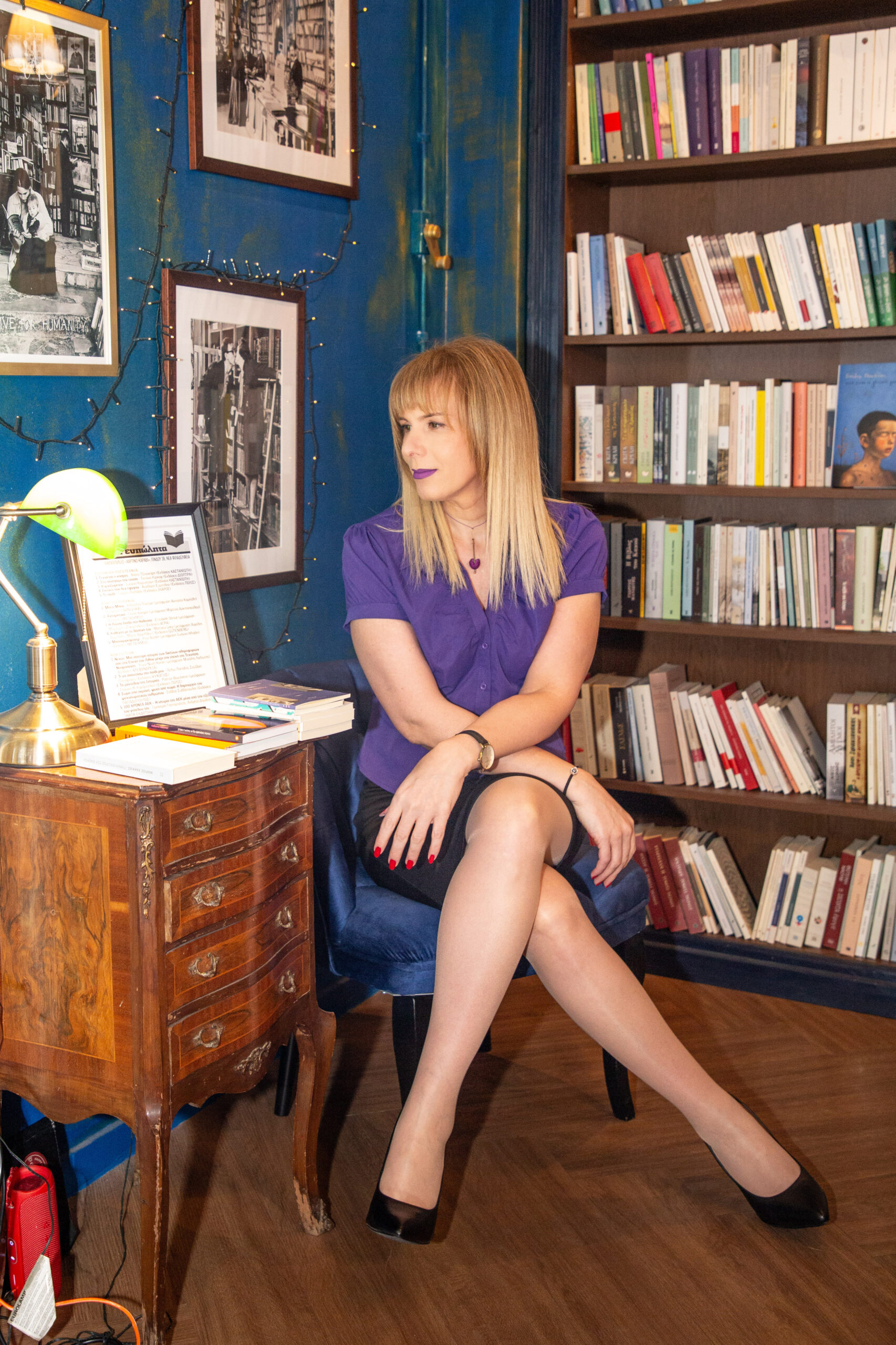In this inspiring interview, we speak with Katherine Reilly, an ELT educator and author whose journey into English Language Teaching is deeply rooted in personal experience, cultural heritage, and a passion for storytelling. From helping her immigrant parents navigate English to creating inclusive, learner-centered ELT materials, she shares how language shaped her identity and fueled her mission to empower students around the world. With a strong focus on empathy, innovation, and adaptability, she opens up about the evolving challenges in language education, the power of multimodal teaching, and the balance between creativity and structure. Whether you’re an aspiring teacher or a seasoned professional, her reflections are a heartfelt reminder of the transformative impact educators can have on learners' lives.
What inspired you to become an ELT teacher, and how has your journey evolved over the years?
Growing up as a Greek-American in the US, language was an integral aspect of my identity. My parents were immigrants who faced the challenge of learning English on their own. I often found myself correcting them - not out of criticism, but from a genuine desire to help them. My mother, despite working long hours at our family diner, was determined to improve her English. She read children’s literature to me daily, perfecting her pronunciation as she went. When she couldn’t be there, she recorded cassettes of her voice narrating stories so I could still hear her reading. Each morning, I’d pour a bowl of cereal, pop in a cassette, and listen, as I followed along in the book. This experience taught me the power of language in forging relationships and personal growth.
I would be at fault not to mention my second-grade teacher who had a profound influence on me. I was shy and frequently teased by my peers for my seclusive stance and cultural heritage. Regardless, she somehow managed to transform her classroom into a welcoming space where all students felt valued and accepted. This experience made me realize that teaching isn’t just about grammar and vocabulary – it’s about fostering respect and empathy in any educational environment.
I found it fitting that, in turn, I would contribute to the learning process; to offer other learners the same opportunities I had to flourish and reach their true potential.
What do you think are the biggest challenges English learners face today, and how can educators help overcome them?
Perhaps the greatest challenge plaguing English learners today is the overwhelming abundance of information at their disposal. The content they are exposed to, mainly through social media, does not always align with their needs. While slang and foul language are certainly major concerns, an even greater issue is the absence of structured guidance in distinguishing proper language use.
Another key challenge is that of self-esteem. Students today live in constant fear of making mistakes in an increasingly judgmental society. It is this apprehension which hinders them from progressing in language learning. Only by ensuring that our classrooms are safe spaces for self-expression can we ameliorate this issue.
Can you share some innovative teaching strategies or techniques that have worked well in your classroom?
As experienced educators, we have to admit that we cater to a diverse range of learners. To this end, I often implement multimodal learning to align with the students’ learning styles. By integrating visual, audio and kinesthetic elements into the lesson, students will engage with the language in various ways.
Another strategy that has worked wonders is the incorporation of reflective activities after completing their textbook activities. For instance, after finishing a writing task, I ask students to share which approaches they implemented, what worked for them, and what troubled them the most. Not only will the feedback help me focus on their shortcomings, but the process itself will enhance their self-awareness and intrapersonal skills.
As an author, what motivated you to start writing ELT materials and books?
I’ve always been an avid reader, particularly of comic books and children’s literature. The way stories, visuals, and language come together always fascinated me from a young age. As an aspiring author, I started off with children’s literature. After some trial and error, I eventually found my own voice and created dozens, if not hundreds of characters for my stories.
Writing ELT materials felt like a natural extension of my teaching. I wanted to address gaps I noticed in existing resources - especially the lack of inclusive, real-world content. Many traditional textbooks don’t reflect the diversity of today’s classrooms, so I felt it necessary to create materials that acknowledge and celebrate different identities, experiences and educational needs. That’s when I transitioned from storyteller to ELT materials author.
My students are my greatest motivation. Seeing their challenges firsthand made me want to develop practical, adaptable materials that truly meet their needs. Writing allows me to reach a wider audience and contribute to the ongoing evolution of ELT methodologies.
What are some key elements that make an effective ELT book or resource?
I adhere to 5 key elements when writing effective ELT materials:
- Engagement: Materials should be interactive, thought-provoking, and connected to real-life situations.
- Scaffolding: Concepts should be built in a progressive fashion so as to ensure learners gain confidence without being overwhelmed.
- Flexibility: Teachers should be able to adapt the content to suit different learning contexts and levels.
- Practicality: The assessment tasks should present realistic experiences that reflect learners’ everyday lives.
- Inclusivity: They should reflect diverse identities, experiences, and perspectives.
How do you balance creativity and structure when writing for English learners?
Believe me, this is no easy task. On the one hand, creativity allows for storytelling. The narrations in the textbook can incorporate humor, trigger the students’ curiosity, make for interesting discourse, and foster contemplation. Nonetheless, storytelling without a linguistic goal serves no purpose. A clear, structured framework must be established in order to cater to the students’ learning needs.
Striking a balance between both is naturally the best approach, even in the most monotonous materials. For instance, when writing a grammar-focused book, I ensure that both the theory and the accompanying tasks are clear and comprehensive. Via realistic examples, interactive tasks, and reflective exercises, I strive to make even the most tedious of tasks engaging and appealing to our learners.
You’ve presented at various conferences—what topics do you find most exciting to discuss, and why?
I’ve always been drawn to speaking and writing because they are productive skills that ignite creativity. They allow learners to express themselves, find their voice, and engage with language in meaningful, profound ways. I am particularly passionate about working with Young Learners. Stimulating children’s minds through storytelling, gamification, and multimodal approaches will help them develop their confidence and communication skills from an early age.
Another topic I frequently present on is the adaptation of teaching materials to ensure accessibility for all learners, regardless of cultural background, gender, or special educational needs. By rendering our materials flexible and equitable, we offer multiple ways for our students to engage and process information, leading to greater comprehension and participation.
How do you think professional development impacts ELT teachers, and what advice would you give to educators looking to grow in their careers?
Professional development is vital to our practices, as it keeps us inspired, informed, and adaptable. The ELT landscape is constantly evolving, and staying engaged with new methodologies ensures that we’re providing the best for our students.
Teachers should remain vigilant by attending conferences, joining professional networks, and being informed of the latest in ELT research. By reflecting on our adopted teaching methodologies and seeking out new perspectives, we refine our practices and offer the best to our students.
With the rise of technology and AI in education, how do you see the future of ELT evolving?
AI literally took us all by storm. One cannot deny the obvious benefits it offers in terms of personalized instruction, real-time feedback, and even the production of adaptable teaching materials. However, technology should enhance, not replace, human interaction. Language learning is deeply rooted in social interactions, and AI should be used to support – not substitute - the role of educators.
I strongly support the notion that the future of ELT will likely involve more blended learning models, where digital tools complement face-to-face instruction. Teachers will need to develop digital literacy skills to effectively use and integrate AI resources. Let’s not forget that AI also carries biases due to the sources of information it draws upon. I believe the key will be maintaining a human-centered approach, ensuring that technology serves the diverse needs of all learners.
What advice would you give to aspiring ELT professionals who want to make a meaningful impact in the field?
Stay passionate, stay inspired, and stay engaged with the evolving needs of learners. ELT is more than teaching a language. It’s about fostering communication, understanding, and the potential for our students to grow and prosper. Don’t be afraid to innovate. Experiment with new teaching methods. Challenge outdated practices. Advocate for accessibility in all aspects of education. Build a support network - connect with mentors, colleagues, and professional ELT communities. Most importantly, never stop learning. The more you grow as an educator, the greater your impact will be on your students

